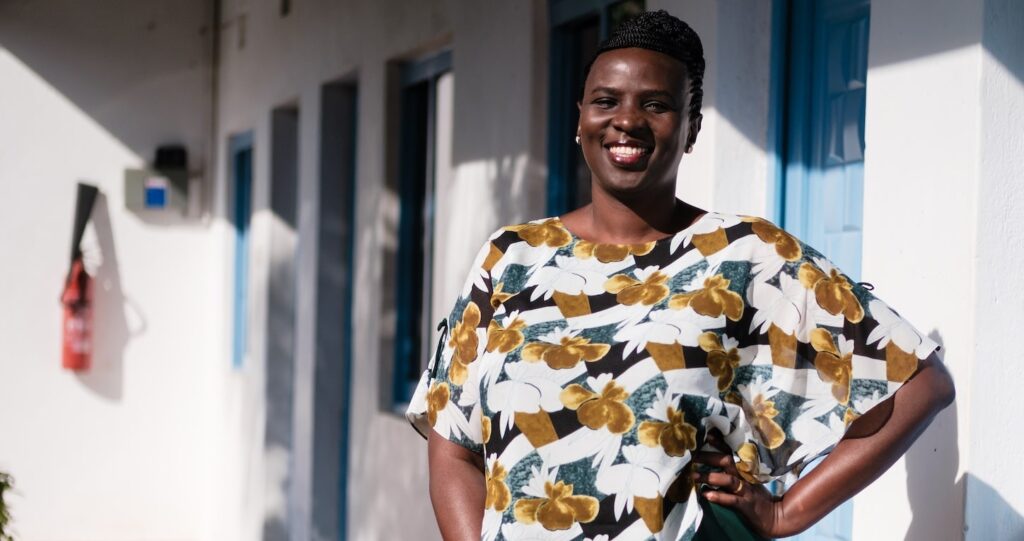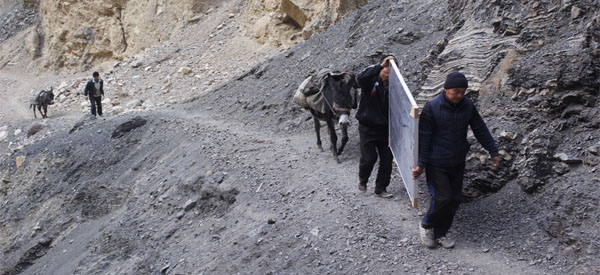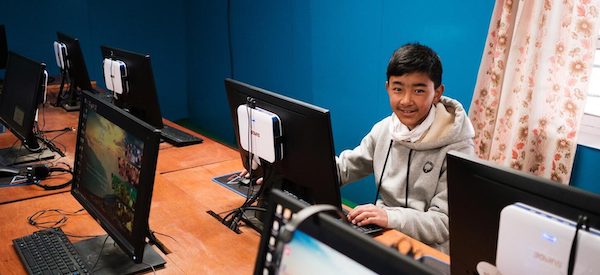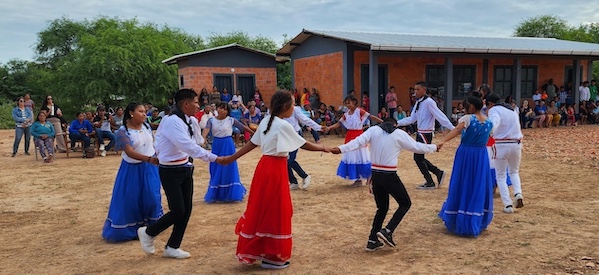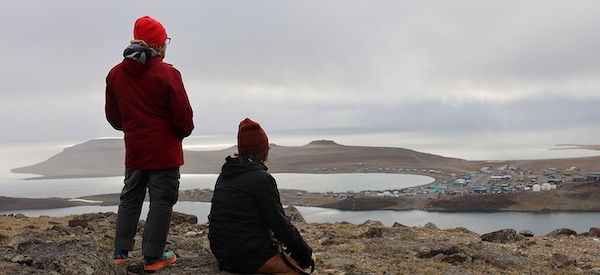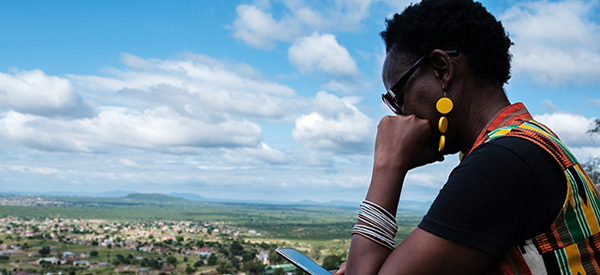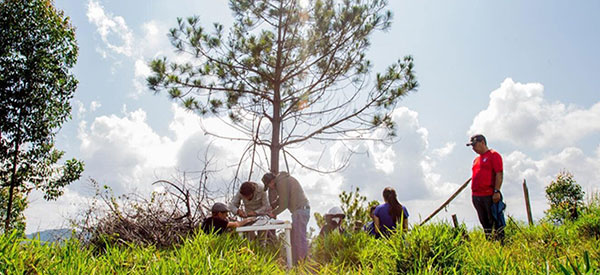North America
NYC Mesh
The NYC Mesh network connects more than 500 households in New York City using a mix of wireless, copper, and fiber mediums. The network has an aggregate bandwidth of 40mbps, offering affordable Internet services since 2020. The network has connected several schools and homeless shelters in the city.
Waimanalo Community Network
The Waimanalo community network, a testament to community spirit, connects approximately 50 households in the Nation of Hawaii, within the island of Oahu. This network, built from the ground up, offers a 40mbps bandwidth that enables various digital services and brings more people online.
Baltimore Community Network
With support from the Internet Society in 2020, a community built an Internet oasis in the city’s traditionally marginalized neighborhoods, known as connectivity deserts. What started as an effort to connect community centers during the pandemic now serves thousands.
Jesup Cyber Wagon
This community network was built as a partnership between an Alabama entrepreneur and the Tuskegee Housing Authority. It connects over 50 households in the Tuskegee and surrounding area with an aggregate bandwidth of 40mbps. The network offers Internet access to the local community training center and the administration offices of the public housing authority.
Sunnyside Technology Hub
Part of a successful partnership between the Internet Society and Truist in 2022, Sunnyside creates a broadband coverage area in the Sunnyside community of Houston in an area of flat terrain that lacks tall buildings.This community network recently started its temporary operations with basic 5mbps wireless connectivity and is in the process of building its own tower infrastructure to scale up.
MoCoNet
Part of a successful partnership between the Internet Society and Truist in 2022, the project provides 100 Mbps MoCoNet broadband, Emergency Connectivity Fund devices and digital empowerment skills training, to enable residents to be independent and engage with each other as a community.
City of Wiliston
Part of a successful partnership between the Internet Society and Truist in 2021, the City of Wiliston improves its broadband program, COWLink, to support efforts to improve broadband access and speed for local businesses, schools and homes.
City of Wilson
Part of a successful partnership between the Internet Society and Truist in 2021, this project expands North Carolina’s Community Broadband fiber-to-the-home into a rural, majority-black community in Wilson County.
Wave 7
Part of a successful partnership between the Internet Society and Truist, the Wave 7 community network connects over 100 households in Enfield, North Carolina, and outlying rural areas. The network runs on wireless technology and offers 40mbps bandwidth, free Internet access to the local public library, and training and online services to the local residents.
Toronto Mesh
This network is not active.
Seattle Community Cellular Network
The Seattle community network is a community-run cellular (4G LTE) Internet access network dedicated to offering fair access to underserved communities across the Puget Sound region, USA. The network connects over 100 households with an aggregate bandwidth of 40mbps. It provides free broadband Internet service to low-income and housing-unstable people who cannot afford high-speed Internet services at their places of residence.
Connected Communities
Part of a successful partnership between the Internet Society and Truist in 2022, Connected Communities deploys high-speed Wi-Fi at a DC Housing Authority property, connecting residents to devices, and facilitating digital literacy and skills training programs.
Fifth Ward
Part of a successful partnership between the Internet Society and Truist in 2022, Fifth Ward provides up to 700 low-income families with Internet access and offers options for increasing digital literacy skills, installing public Wi-Fi benches, and adding antennas and nodes to community spaces.
Connecting for Good
Part of a successful partnership between the Internet Society and Truist in 2022, Connecting for Good expands a project to connect low-income multi-dwelling unit buildings and nearby single-family homes across the city to free and low-cost broadband Internet service.
Roanoke Connect Broadband
Part of a successful partnership between the Internet Society and Truist in 2022, Roanoke Connect Broadband expands a network to increase broadband access in rural northeast North Carolina counties with high poverty rates.
DCPS Overcome 21
Part of a successful partnership between the Internet Society and Truist in 2021, the Duval County Public Schools lead the Project OVERCOME21, a plan to turn schools in the Florida district into local broadband hubs for the surrounding community. The hubs boost signals to a three-mile radius and connect to the school district’s existing network.
Waianae Community Network
Pu’uhonua o Waianae is a community on the west coast of Oahu in Hawai’i. Residents of Pu’uhonua Waianae participated in a network build in Pu’uhonua o Waimānalo in 2019 and are now ready to create a similar network in their own community. In conjunction with building houses and community buildings at the new location, residents are building the community network. Fiber termination is extended to the community gate by HawaiiTel.
Ulukhaktok Community Network
This community network connects over 50 households in Ulukhaktok, Northwest Territories of Canada. It runs a cellular (4G LTE) Internet access network dedicated to fair access to underserved communities at a much affordable cost. The network is also connected to a local community center.
Asia-Pacific
Uttargaya Community Network
Since 2021, this community network has served over 600 people internally displaced by the 2015 Nepal earthquake. The network is located at Ward No. 5 of the Uttargaya Rural Municipality Laharepauwa, Rasuwa, Nepal. The local women use this network to offer food cooking and service delivery to nearby places.
Digital Dera
This network serves over 1,000 farmers from villages around Chak 26-SP in the Pakpattan district of Punjab province in Pakistan. It provides an aggregate of 10mbps wireless connectivity installed in a village community center (Dera) equipped with solar power, laptops, and multimedia equipment. Since 2021, Digital Dera has enabled farmers to make effective, efficient, and smart decisions using data, information, guidance, and technology.
Chirala Community Network
The Chirala community network connects over 500 households in Vodarevu village in the Prakasam district of Andhra Pradesh, India. This wireless-based network provides Internet access to the local school and offers digital literacy, citizen services, and opportunities to set up local micro-enterprises.
Everest Community Network
This community network connects the Nepalese Sherpas living in the villages of Khunde and Khumjung, 10.4 km from Mount Everest base camp. Established in 2022, the network offers high-speed fiber connectivity to homes and lodges, providing Internet access to over 200 households. With an aggregate bandwidth of 300mbps, this network has enabled new opportunities for this Tibetan ethnic community in tourism, freelancing, health, and education.
Gabagaba Community Network
The GabaGaba community network connects over 50 households in a remote coastal village of Papua New Guinea. This Wi-Fi-based network provides Internet access through a community space, offering a bandwidth of 10mbps. Operating since 2022, this community network is supported by the National Information and Communications Technology Authority (NICTA). The network provides regular digital literacy training to local youth and allows fishermen to sell fish at the local market.
Ziro Community Network
This community network connects over 500 households of the Indigenous communities of Ziro Valley, located in the Lower Subansiri district of Andra Pradesh, India. Since 2022, this wireless network has offered an aggregate bandwidth of 100mbps installed in 10 community center buildings. The network runs regular training classes for local villagers on content development, empowerment, and social development.
WALI Community Network
WALI community network serves nearly 400 children and youth from Ahmed Abad village of the Lasbela district in the Balochistan province, Pakistan. The network provides an aggregate of 10mbps wireless connectivity installed in a community center building equipped with solar power, computers, and multimedia equipment. Established in 2022, the network runs regular training classes on empowerment, social development, and technology adoption for local youth and children.
